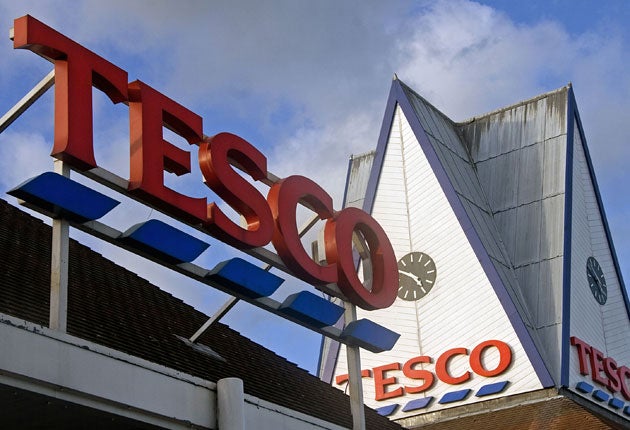Tesco announces £1.4bn profits

Your support helps us to tell the story
From reproductive rights to climate change to Big Tech, The Independent is on the ground when the story is developing. Whether it's investigating the financials of Elon Musk's pro-Trump PAC or producing our latest documentary, 'The A Word', which shines a light on the American women fighting for reproductive rights, we know how important it is to parse out the facts from the messaging.
At such a critical moment in US history, we need reporters on the ground. Your donation allows us to keep sending journalists to speak to both sides of the story.
The Independent is trusted by Americans across the entire political spectrum. And unlike many other quality news outlets, we choose not to lock Americans out of our reporting and analysis with paywalls. We believe quality journalism should be available to everyone, paid for by those who can afford it.
Your support makes all the difference.Supermarket giant Tesco today said it made £1.4 billion in profits for the first half of its financial year.
The group, which saw pre-tax profits rise 1.5 per cent in the six months to August 29, generated total sales of more than £1 billion a week at £30.4 billion. Like-for-like sales rose 2.7per cent in the UK - slower than the growth achieved by its rivals.
However, the firm said recent moves to enhance its Clubcard customer reward strategy were paying off, adding it had seen a "significant improvement" in its performance compared with its competitors.
Tesco's underlying profit before tax, which strips out one-off items, was £1.6 billion, a rise of 8.6 per cent and slightly ahead of market expectations.
The UK's largest supermarket chain has seen its dominant market share position come under attack from rivals in recent months.
In the first half its UK sales including VAT rose 2.8 per cent to £20.7 billion, but this was much slower than the 10 per cent growth seen last year as weaker inflation and the economic downturn hit the figures.
Tesco said the performance was "solid" but said this was "despite competitive market conditions and the backdrop of a weak economy".
Finance director Laurie McIlwee said falling inflation had taken the shine off the like-for-like figures as the company passed a comparative period last year of high commodity prices.
He said Tesco had now started to see its sales figures run at around the same rate as the rest of the industry.
"It has actually converged and performance is much stronger relative to the rest of the market," he said.
He said Tesco usually did better in a period of deflation due to the company's "everyday" value offering.
The supermarket's long term plan is to grow like-for-like sales at around 3 per cent, he added.
Mr McIlwee predicted the second half would be a continuation of trends seen in the first.
"I think what you will see in the second half as inflation drops is that retailers will stop promoting as much," he said.
But he expected the fight for supremacy between retailers in the UK to continue.
Tesco said it opened 87 stores in the first half, including its 1,000th Express outlet, which helped the supermarket continue to grow total sales.
The supermarket, which sells everything from electrical goods to furnishings and clothing, said its non-food business had been "very resilient" in the downturn as consumers looked for cheaper products.
The firm said like-for-like sales growth across the category had improved in the second quarter, with total growth of 4.9 per cent in the half.
Electricals enjoyed double-digit like-for-like growth and clothing was helped by a back-to-school campaign.
Homewares were particularly hard hit amid the housing market slowdown but were now said to be recovering.
Meanwhile, Tesco said it was making "good progress" with Fresh & Easy, its troubled attempt to enter the US market.
US trading losses were £85 million in the period, representing a 42 per cent deterioration on a year earlier.
The brand has encountered "prolonged weakness" in the economies of California, Nevada and Arizona.
Tesco said the difficult economic climate meant it would now build sales steadily, adopting a "cautious" approach to new store openings and reduced marketing expenditure.
It has also made changes to some of its product lines as a result of customer feedback - including boosting the choice of cereals and pet food and introducing house brands for those on a budget.
But the firm said these changes together had hit its like-for-like figures.
Fresh & Easy now has 126 stores and Tesco said it plans to open a new outlet every week this year. Trading losses for the full year are forecast to be similar to those of last year in dollar terms, while the firm hopes a new marketing campaign will help to raise the profile of the business.
"It will always be a battle," he said.
Join our commenting forum
Join thought-provoking conversations, follow other Independent readers and see their replies
Comments